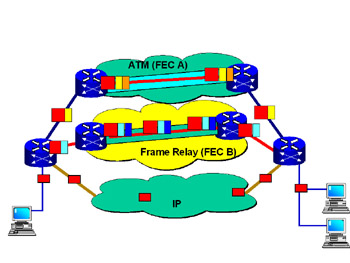Exercise 1.1 Summary
|
| < Day Day Up > |
|
In this exercise, we saw the manner in which granularity of services affects the length of a switching table. The more decision points, or the more granular the decision points, the longer the switching tables and the more complex that switching becomes.
There are several key components to the construction of an MPLS network. The LER adds and/or removes (“pops” or “pushes”) labels. The LSR examines packets, swaps labels, and forwards packets. Finally, the LSPs are the preassigned, preengineered paths that MPLS packets could take.
At this point, you might be asking whether the advantages of MPLS are worth the extra effort needed to understanding its workings. Consider the following for yourself:
Your company uses a database application that is intolerant of packet loss or jitter. In order to ensure that your prime traffic will get through, you have secured a high-cost circuit, and you have overprovisioned that circuit by 60 percent. In other words, you are sending all of your mail as “express mail”—for $13.50 per packet!
With MPLS, you can have the LER sort your packets and place only your highest-priority traffic on the most expensive circuits while allowing your routine traffic to take other paths. You have the ability to classify traffic in MPLS terms, and your LER sorts traffic into FECs. Figure 1.6 shows the network now broken down into FECs.

Figure 1.6: MPLS Network with Two FECs
|
| < Day Day Up > |
|
EAN: 2147483647
Pages: 138